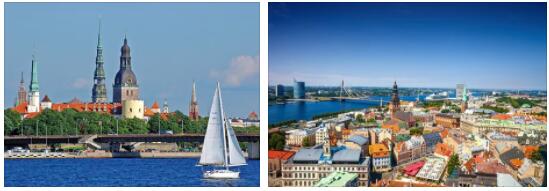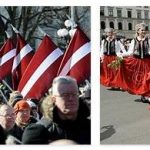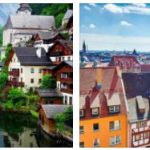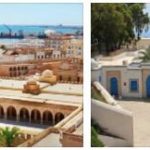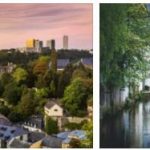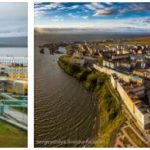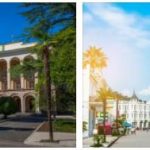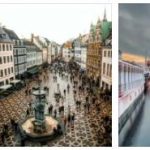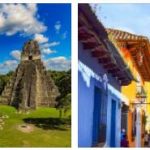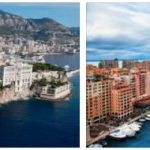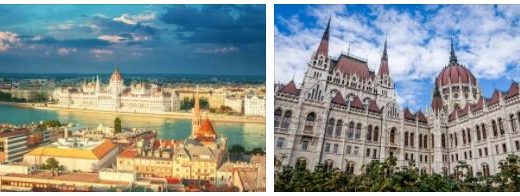What to See in Latvia
CITIES
Riga is the capital and cultural center of Latvia. This is one of the most beautiful cities in Europe. Riga was founded in 1201 by German knights and became the capital of independent Latvia in 1920. German, Swedish, Polish and Russian cultures affected the appearance of the city, there are a lot of historical sights here, so Riga was included in the UNESCO list of architectural heritage.
The old town is built up with medieval buildings – the Dome Cathedral, St. Peter ‘s Cathedral, the Swedish Gates, the Riga Castle, the Powder Tower. Riga Castle was founded in 1330, now the residence of the President of Latvia is located here. In addition, several museums are open in the castle: Museum of Foreign Art, History of Latvia, Literature, Theater and Music.
The Dome Cathedral and the monastery on the square of the same name were founded in 1211, its construction continued for many centuries. The cathedral is adorned with a 90-meter tower, and inside it is one of the largest organs in the world. The height of this organ is 25 m, width – 11 m. The sounds of the organ are constantly heard in the Cathedral and divine services are regularly held. Check top-medical-schools.org for travel information in Latvia.
The main church building of medieval Riga – St. Peter ‘s Cathedral. The first mention of it refers to 1209. Until recently, it was the tallest building in the city (123 m). There are two observation decks on the church tower, which can be reached by elevator, and the spire of the tower is crowned with a rooster.
It is interesting to see the Swedish Gates, which were cut into the Riga fortress wall in the 17th century; they have survived to this day. The Powder Tower, where gunpowder was stored in the Middle Ages, remained untouched, now the Military Museum is located here.
In the center of Riga stands the Freedom Monument – a symbol of Latvia ‘s independence. It was erected in 1931-1935 according to the project of the architect Karlis Zale. The monument is the Statue of Liberty, which holds three stars in its hands – symbols of the historical regions of Latvia: Kurzeme, Vidzeme, Latgale. A guard of honor is installed near the monument.
As in all ancient European cities, Riga has a Central Market. This is one of the largest markets in Europe, its area is about 73 thousand square meters. It consists of four main pavilions – meat, fish, vegetable, dairy.
Be sure to visit the Ethnographic Museum – an open-air museum where you will see Latvia in miniature.
Daugavpils is the second largest city in Latvia. It is located 200 km from Riga on the border with Lithuania and Belarus. Its history begins in 1275. In the Old Town there is the Daugavpils Fortress (the only fortress in the entire Baltic that has survived without significant changes), the Orthodox Cathedral, the Catholic Church and the Lutheran Church and the House of Unity. The facades of the houses here are made of red brick, which are called “Latgale Baroque”.
In architectural terms, the city of Liepaja is interesting, which is located in Kurzeme on the coast of the Baltic Sea. The first mention of the city dates back to 1253. Today it is both a resort and a major port. Since the beginning of the 20th century, there was a naval port of the Russian Empire on the Baltic Sea. The main attraction of Liepaja is the Orthodox Cathedral of St. Nicholas. It was built in 1900-1903 on the territory of a military port, and Tsar Nicholas II laid the first stone in its foundation. The Church of St. Anna, the oldest in Liepaja, has been preserved in the city, mentions of which date back to 1508. In the church you can see a surprisingly beautiful altar from the end of the 17th century.
There is a lot of vegetation in the city – there is even Rose Square, which has been decorated with numerous rose bushes since 1911. In Liepaja there is the largest park in Latvia – Seaside. The area of the park is more than 50 hectares, more than 140 different types of trees and shrubs grow here.
Tourists in Liepaja also offer to participate in a theatrical show. From the old port, a garrison prison has remained here, where you can feel like a prisoner. It complies with all the realities of prison life – a medical examination, interrogation, a photograph with a number in hand and even a prison ration, if you wish, you can stay in prison for the night.
A little north along the coast is located Ventspils – a major Latvian port. It is a dynamically developing city-resort. In Ventspils, the Castle of the Livonian Order is interesting, where the historical museum is now located, and it is also worth visiting the Ethnographic Open Air Museum, along which the train of the 1916 model runs.
Of the ancient cities in the northern part of the country, Cesis can be distinguished, it is located in the Vidzeme region. Cēsis was founded in 1207. Tourists go here to look at the Riekstu Kalis (Nut Mountain) hillfort with the remains of ancient fortifications. Here is the Castle of the Livonian Order, the best preserved of all the castles of that time. The construction of the castle dates back to 1207. It is one of the few monuments of such ancient architecture that have survived to this day, it combines elements of Gothic, Classicism and Baroque. Now a costumed theatrical performance is being organized here: knights in armor meet guests, torches burn, ancient music sounds, dances are performed, and a real medieval meal is offered. In addition, in Cēsis there is the largest Church of St. John in Vidzeme, which was built in the 13th century.
Kraslava. At the entrance to it, on the right side of the road on the banks of the Daugava, there is a picturesque “Adam’s settlement”, it is here that the “Adam’s path”, popular with tourists, begins. Its length is only 1.8 km, but in this relatively small segment you can see the local nature. Biologists have counted 755 species of fern and seed plants here – about half of all found in Latvia. And around the trail there are about 50 species of snails. In Kraslava region there is “Mountain of the Sun” (Sauleskalns) – this is an ancient settlement and one of the highest points in Latgale: the height of the hill is 211 m above sea level. In pre-Christian times, there was a temple here, where people converged on the feast of the summer solstice.
On the Daugava River. It was founded at the beginning of the 17th century as a settlement of Old Believers persecuted in Russia. The Krustpils Castle is located here, where the Jekabpils Historical Museum is now located. The museum houses the room of the Soviet army and the cellars of the medieval castle have been preserved. In Jekabpils there is a Forest Park near the Raju reservoir, where a beach with a place for swimming is arranged.
Bauska district is very popular among tourists, 77 kilometers from Riga, where the Rundāle Palace is located – one of the most significant architectural and historical monuments in Latvia, as well as the ruins of the Bauska fortress and the palace of Mezhotne. Rundāle Palace was built according to the project of Rastrelli in 1736-1740. The favorite of the Empress Anna Ioannovna – Biron lived in it. Here are 46 different interiors in the Rococo style with parquet, stucco, antique mirrors, portraits of famous people of that time, stylish furniture and tiled stoves, Chinese porcelain vases. There is a beautiful park next to the palace. Bauska fortress (1443) – the last fortress built by the Livonian Order in the territory of Livonia. Now the walls and one of the five towers of the fortress have been preserved from it. The Mezhotne Palace was presented by Empress Catherine II to the tutor of her grandson. It was built in the classical style, and its English-style park is one of the largest landscape parks in Latvia.
Tourists who love nature can be advised to walk along the hiking trails of Kemeri National Park. These are trails along the Kemeri peat bog, the Black Alder Forest, Slok Lake and the Kanier settlement. All these routes attract tourists with their flora and fauna, and under normal conditions it would be difficult to pass along them. Here you will be given an experienced guide.
Of the natural attractions, waterfalls can be distinguished. “Ventas rumba” is located near the city of Kuldiga. This is the widest waterfall in Europe – its width is 249 m, height – 2 m. A brick arch bridge was built through it in 1874. The bridge is an architectural monument and a hallmark of Kuldiga. Not far from Cēsis you can visit the “Great Waterfall”, which consists of 7 sources. The height of the waterfall is 7.5 m, which makes it the highest multi-stage waterfall in Latvia.
